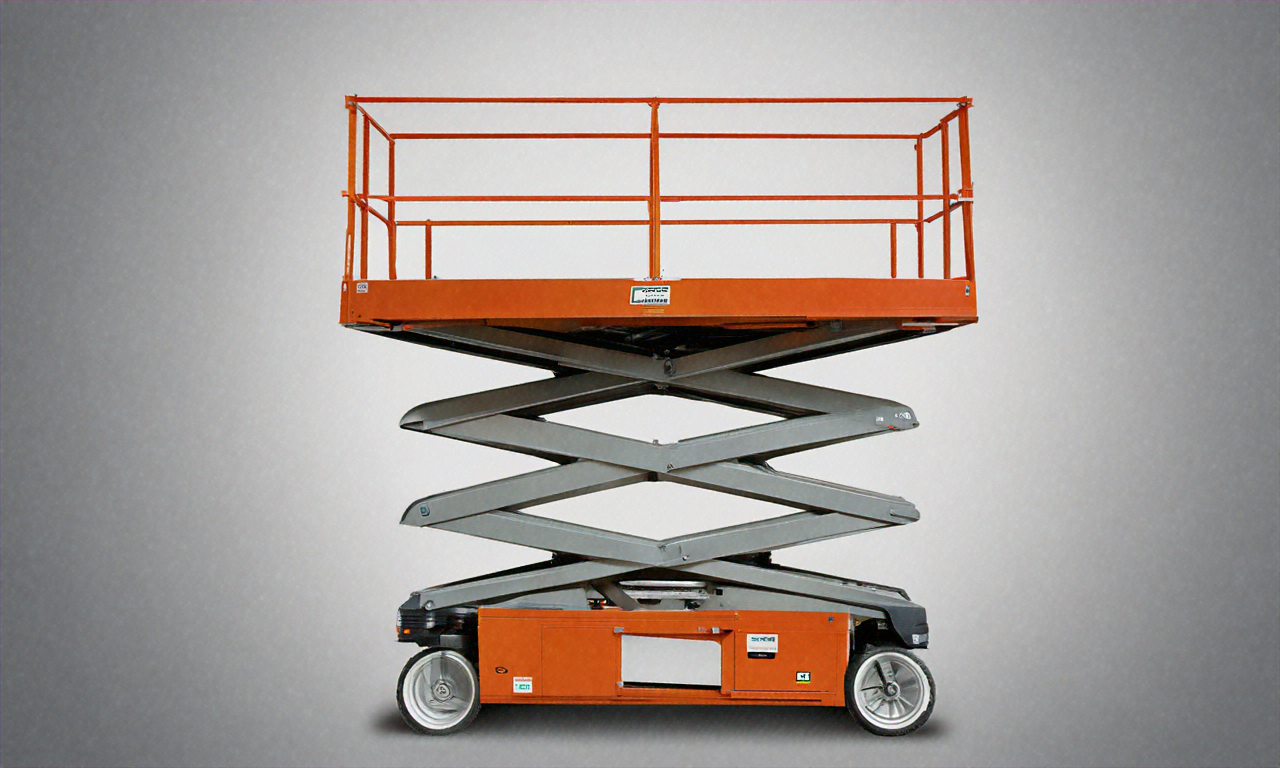Scissor Lifts: Essential Equipment for Vertical Access and Industrial Applications
Scissor lifts are versatile pieces of equipment that have revolutionized vertical access in various industries. These hydraulic-powered platforms provide a safe and efficient way to reach elevated areas, making them indispensable in construction, warehousing, and maintenance operations. As a crucial component of industrial machinery, scissor lifts have become increasingly popular due to their ability to enhance productivity and workplace safety.

The lifting mechanism is typically powered by hydraulic cylinders, which use fluid pressure to extend the scissor structure. Some models may use pneumatic or mechanical systems instead. As the scissor mechanism extends, it pushes the work platform upwards, allowing workers to access high areas safely and efficiently.
What are the main applications of scissor lifts?
Scissor lifts find extensive use across various industries due to their versatility and efficiency. In construction, they are essential for tasks such as installing ceiling fixtures, painting, and maintenance work on tall structures. Warehouses rely on scissor lifts for inventory management, stocking shelves, and accessing high storage areas.
In manufacturing facilities, these lifts facilitate equipment maintenance, assembly processes, and general facility upkeep. The entertainment industry also utilizes scissor lifts for stage setup, lighting installation, and event production. Additionally, scissor lifts are valuable in retail settings for changing signage, decorating, and maintaining high ceilings in large stores.
What are the key features and benefits of using a scissor lift?
Scissor lifts offer numerous advantages that make them a preferred choice for vertical access solutions. One of the primary benefits is improved safety compared to traditional ladders or scaffolding. The stable platform and guardrails provide a secure working environment, reducing the risk of falls and accidents.
These lifts also enhance productivity by allowing workers to move equipment and materials to elevated positions easily. Many models feature extendable platforms, increasing the working area and enabling multiple workers to operate simultaneously. The compact design of scissor lifts makes them ideal for maneuvering in tight spaces, and their mobility allows for quick repositioning between tasks.
How do you choose the right scissor lift for your needs?
Selecting the appropriate scissor lift depends on several factors. First, consider the maximum working height required for your tasks. Scissor lifts come in various sizes, with working heights ranging from 15 to 50 feet or more. Next, evaluate the weight capacity needed to support workers, tools, and materials safely.
The type of power source is another crucial consideration. Electric scissor lifts are ideal for indoor use due to their quiet operation and zero emissions. For outdoor applications or rough terrain, rough-terrain scissor lifts with diesel or dual-fuel engines might be more suitable.
Platform size and maneuverability are also important factors. Ensure the lift can fit through doorways and navigate your workspace effectively. Some models offer features like non-marking tires for indoor use or all-terrain capabilities for outdoor applications.
What safety considerations are important when using scissor lifts?
Safety is paramount when operating scissor lifts. Proper training is essential for all operators to ensure they understand the equipment’s capabilities and limitations. Always inspect the lift before use, checking for any signs of damage or wear that could compromise safety.
Adhere to weight limits and avoid overloading the platform. Be aware of overhead obstructions and maintain a safe distance from power lines. When moving the lift, ensure the platform is fully lowered and the area is clear of obstacles and personnel.
Weather conditions can affect outdoor operations, so be cautious of wind speeds and never use the lift in severe weather. Always use personal protective equipment, including fall protection when required by regulations or manufacturer guidelines.
What are the maintenance requirements for scissor lifts?
Regular maintenance is crucial for ensuring the longevity and safe operation of scissor lifts. Daily visual inspections should be conducted to check for any obvious damage or issues. Pay attention to hydraulic systems, looking for leaks or damage to hoses and fittings.
Periodic maintenance should include lubricating moving parts, checking and adjusting fluid levels, and inspecting the structural components for wear or damage. The frequency of these checks will depend on usage and environmental conditions.
Batteries in electric models require regular charging and maintenance to ensure optimal performance. For engine-powered lifts, follow the manufacturer’s guidelines for oil changes and other engine maintenance tasks.
Annual inspections by qualified technicians are typically required to certify the lift’s safety and compliance with regulations. Keep detailed records of all maintenance activities and inspections for compliance and safety purposes.
By understanding the applications, benefits, and proper use of scissor lifts, businesses can significantly enhance their vertical access capabilities, improve workplace safety, and boost overall productivity in various industrial and construction settings.






